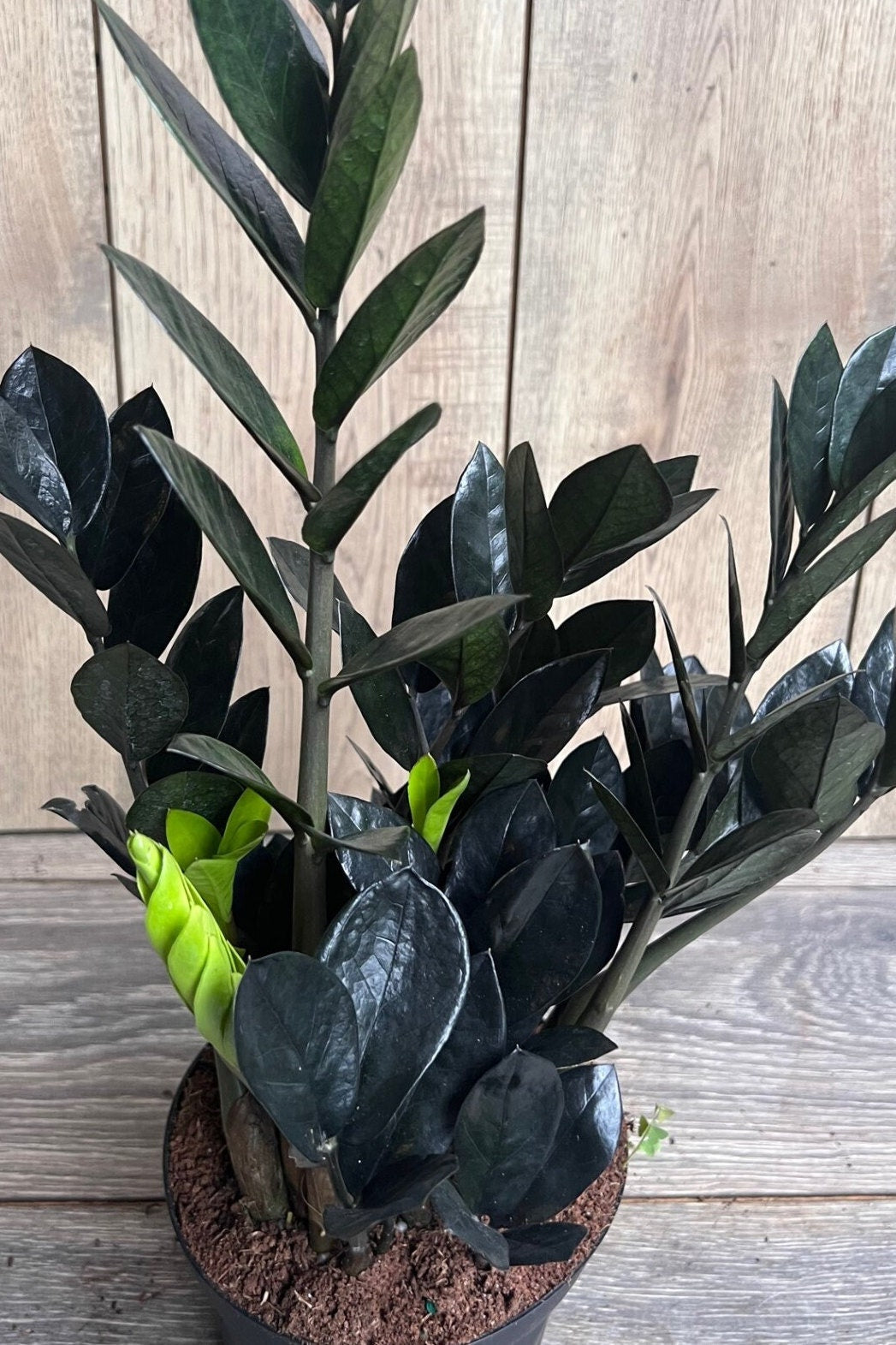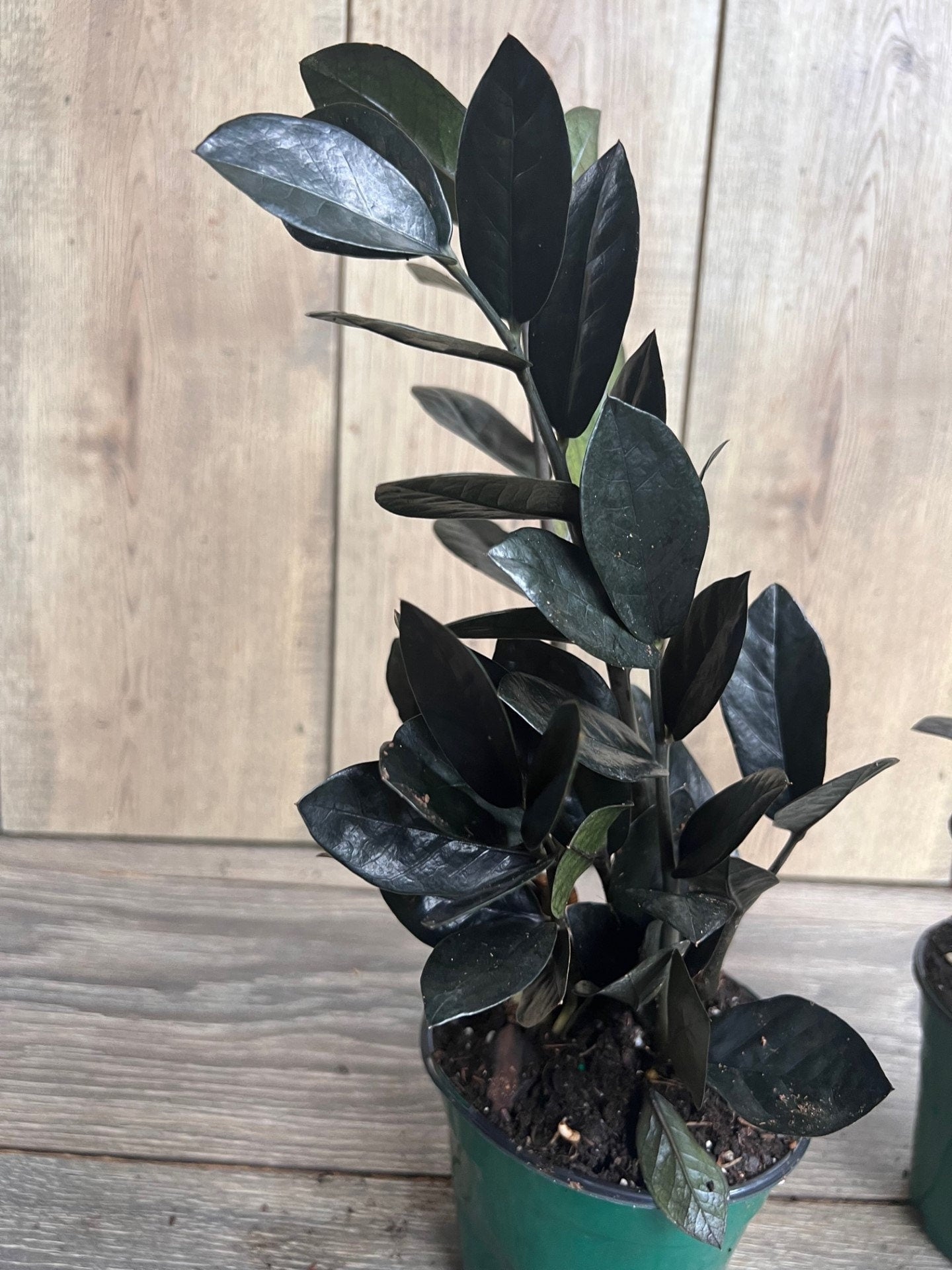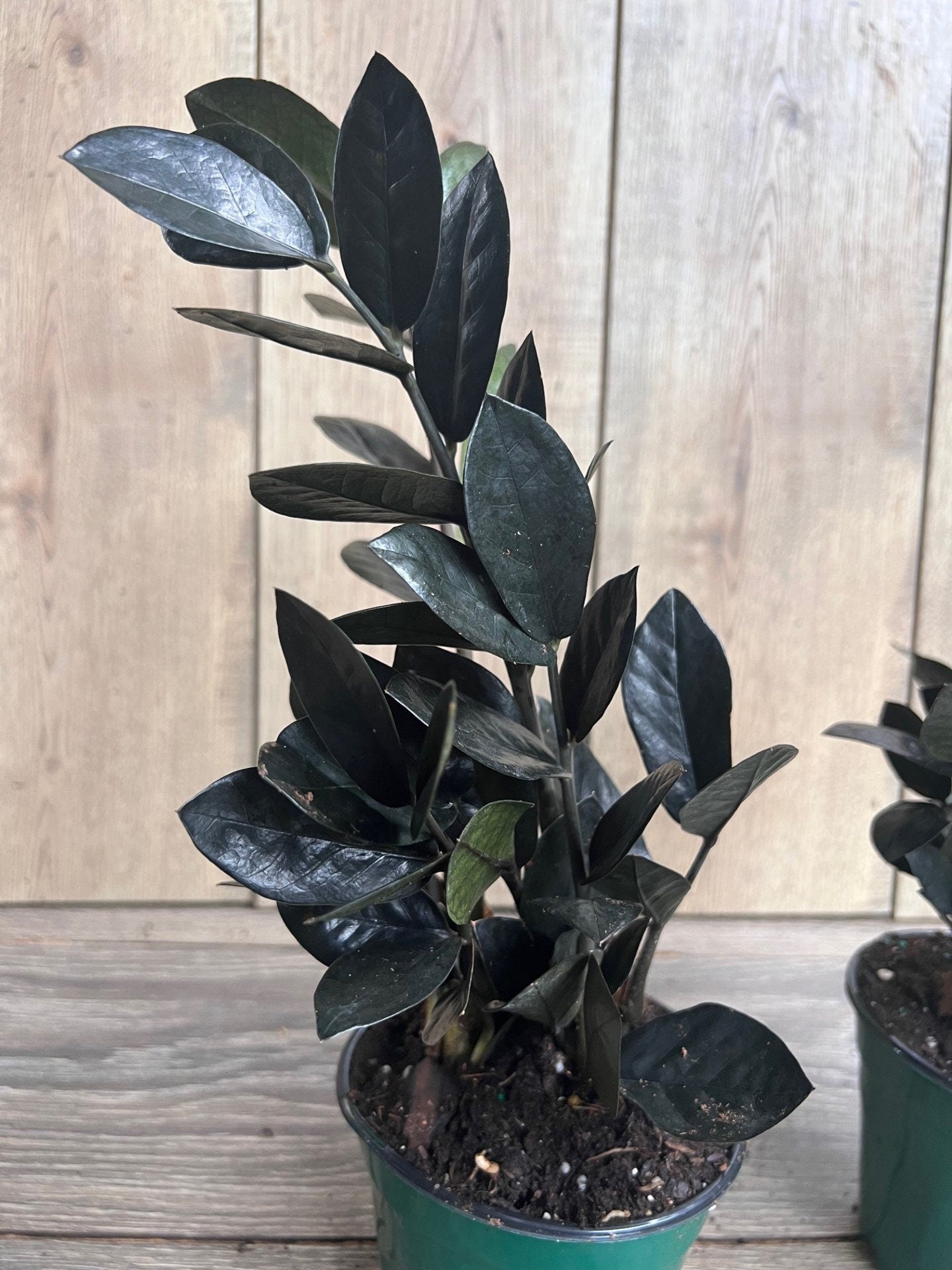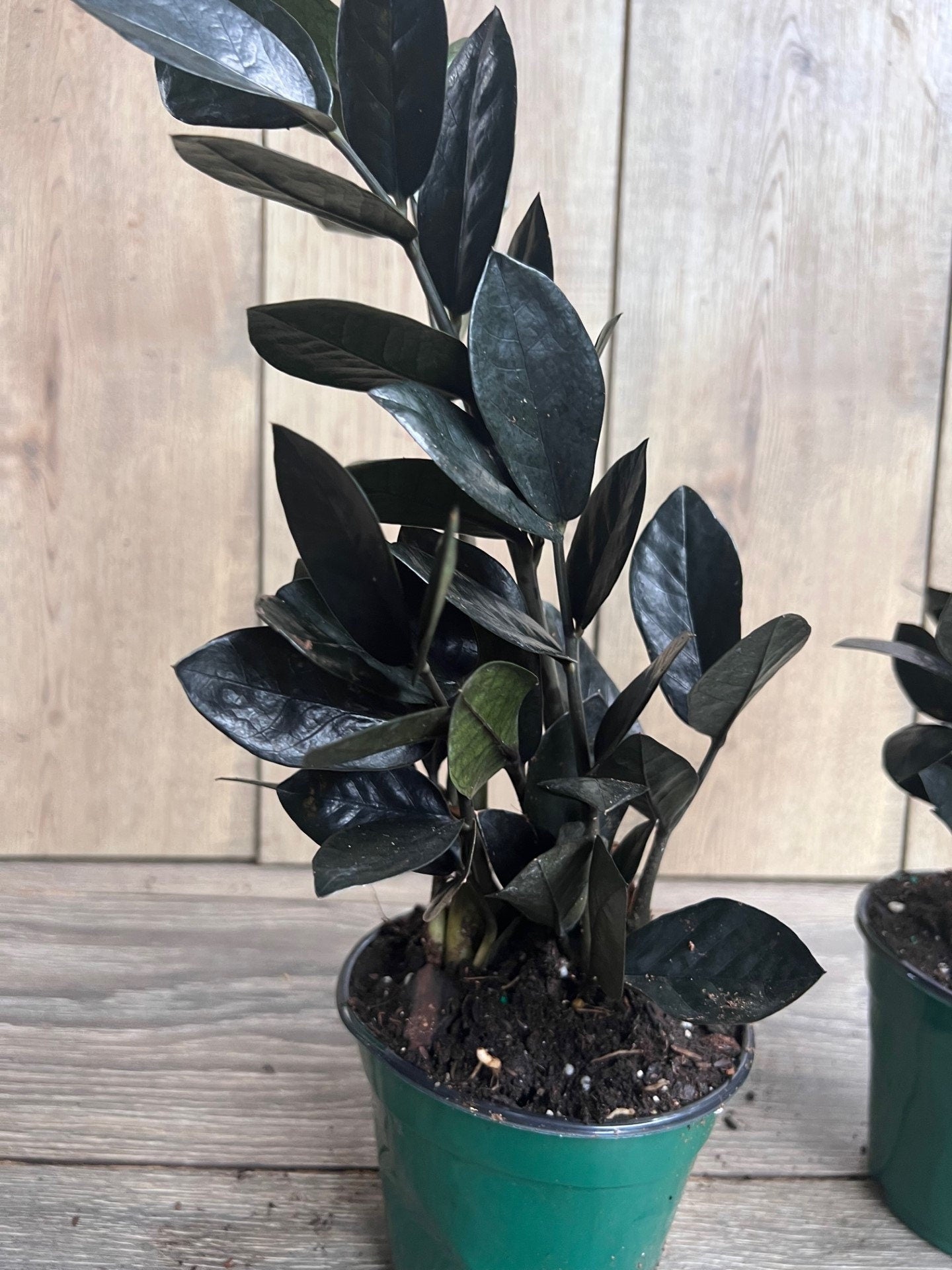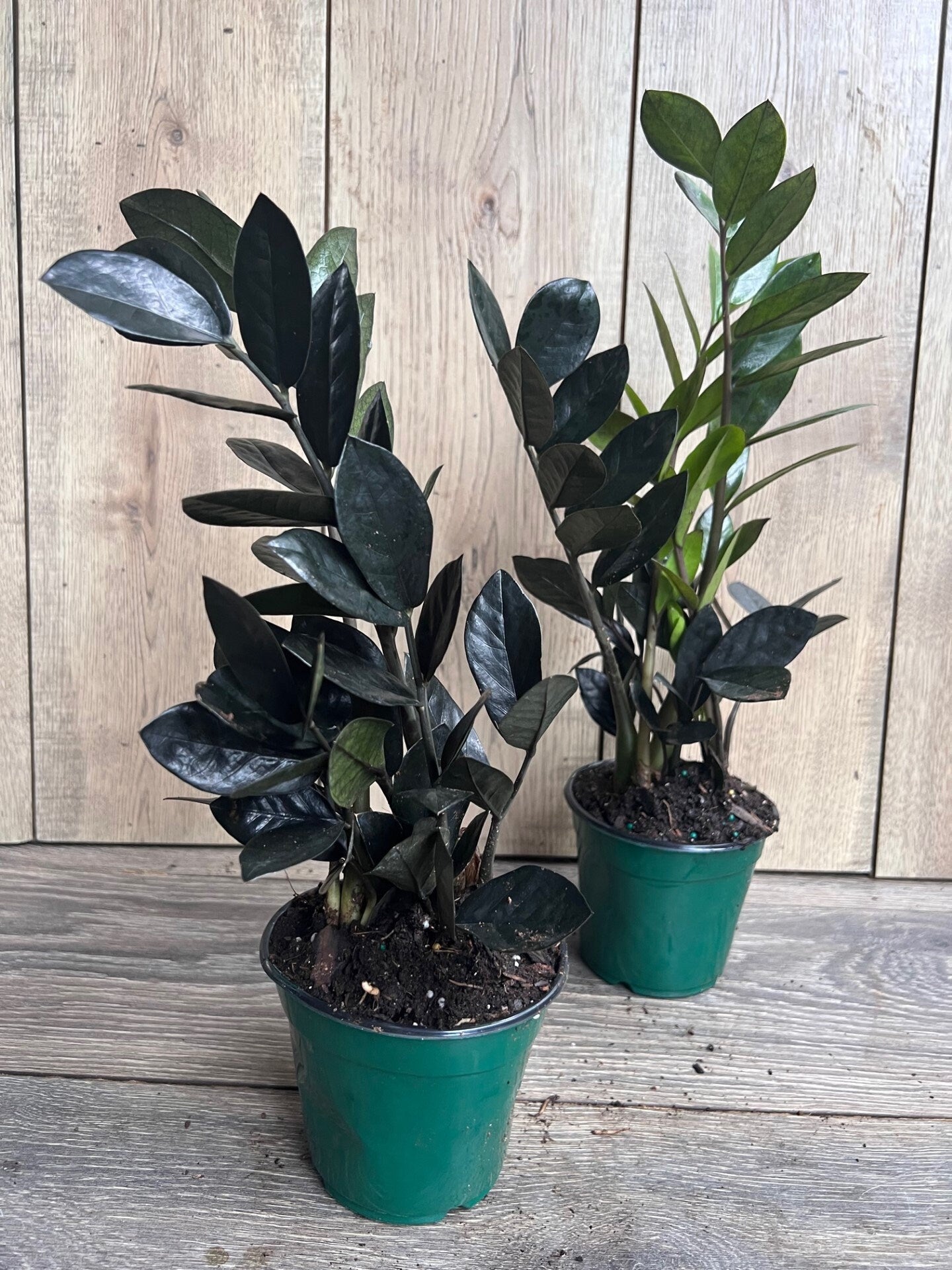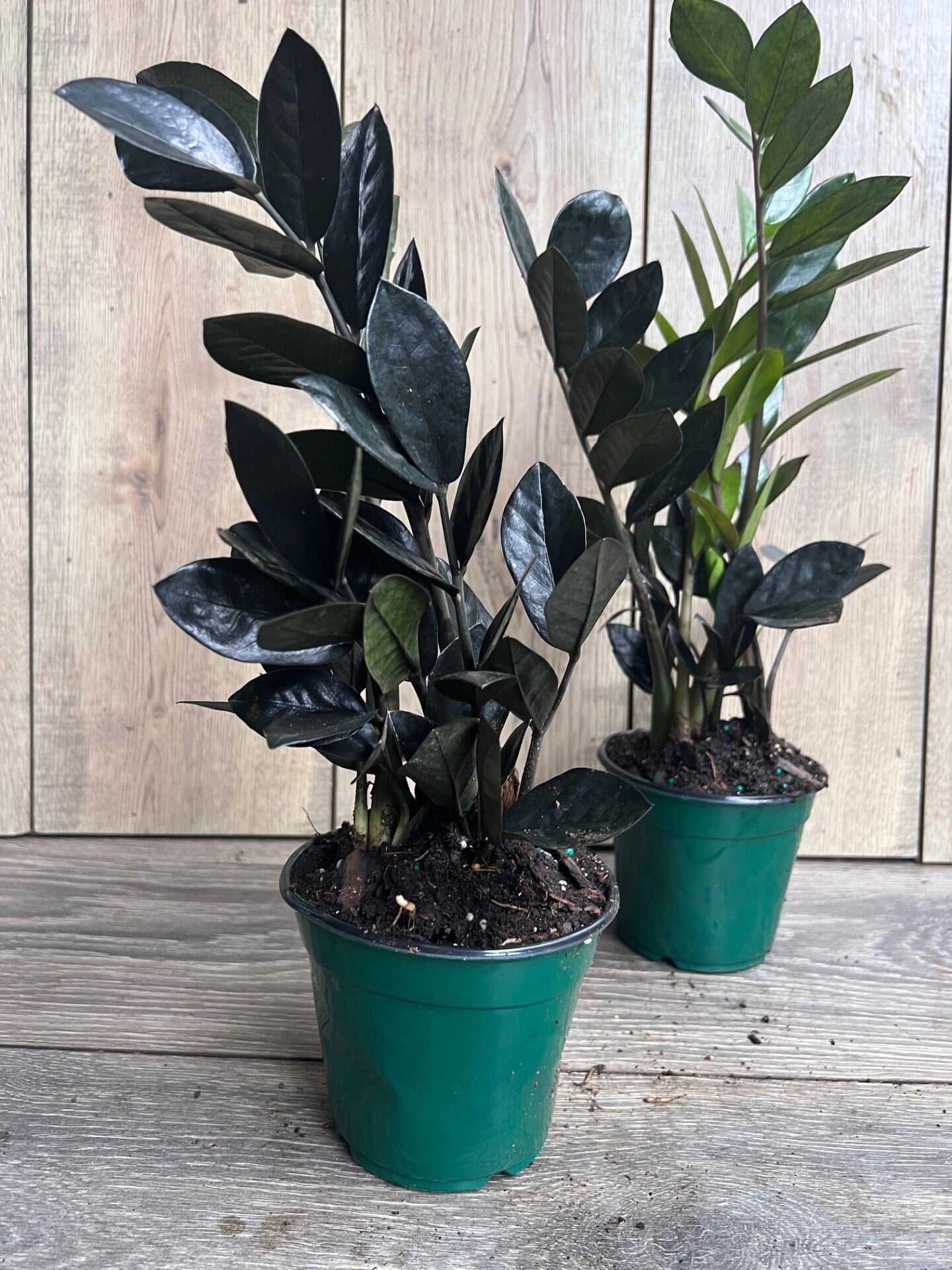1
/
of
6
Black Raven ZZ, dark zz plant 4" Pot, Zamioculcas zamiifolia raven
Black Raven ZZ, dark zz plant 4" Pot, Zamioculcas zamiifolia raven
Regular price
$27.26 USD
Regular price
$36.34 USD
Sale price
$27.26 USD
Unit price
/
per
Shipping calculated at checkout.
Couldn't load pickup availability
Note: You will receive Black zz in 4" pot similar to the pictures.
Black Raven ZZ Plant Care Guide
The Black Raven ZZ (Zamioculcas zamiifolia) is a stunning variety of the popular ZZ plant, known for its dark, glossy, almost black foliage. Native to East Africa, this plant is as hardy and low-maintenance as the original ZZ, but with a dramatic, eye-catching look.
Light Requirements
- Low to Bright Indirect Light: The Black Raven ZZ thrives in a range of light conditions, from low to bright indirect light. Growth will be slower in lower light.
- Ideal Lighting: Place in medium to bright indirect light for robust growth. Avoid direct sunlight, which can scorch the dark leaves, causing yellow or brown spots.
- Best Location: Near a window with sheer curtains or in a well-lit room with no direct sun exposure.
Watering
- Watering Needs: Extremely drought-tolerant, the Black Raven ZZ prefers to dry out completely between waterings. Overwatering is the most common cause of problems.
- Watering Frequency: Water every 2-3 weeks during the growing season (spring/summer). In fall/winter, water once a month or when the soil is dry.
- Signs of Overwatering: Yellow or mushy leaves indicate overwatering or poor drainage. Ensure the pot has drainage holes.
- Watering Tip: Check soil moisture by inserting your finger 1-2 inches deep. If dry, water. If still moist, wait a few days.
Temperature
- Warm Temperatures: Prefers temperatures between 65°F to 75°F (18°C to 24°C). Avoid exposure to temperatures below 50°F (10°C) as it is sensitive to cold.
- Indoor Care: Keep in a stable temperature, away from drafts, air conditioners, or heaters.
Soil
- Well-Draining Soil: Use a cactus or succulent mix, or mix standard potting soil with perlite or sand to improve drainage.
- Soil pH: Prefers slightly acidic to neutral soil (pH 6.0 to 7.0).
- Avoid Heavy, Clay-Like Soils: ZZ plants do not tolerate waterlogged soil, so ensure good drainage.
Fertilizing
- Minimal Fertilizing: The Black Raven ZZ is a slow grower and doesn't need frequent fertilizing. Fertilize only during the growing season (spring/summer).
- Fertilizer Type: Use a balanced liquid fertilizer (e.g., 10-10-10) diluted to half strength. Feed once a month during the growing season. Avoid fertilizing in fall/winter when the plant is dormant.
- Avoid Overfertilizing: Over-fertilizing can lead to salt buildup, damaging the plant. Stick to a conservative fertilizing schedule.
Pruning and Maintenance
- Minimal Pruning: The plant doesn’t require regular pruning. Remove dead or yellowing leaves as needed.
- Cleaning the Leaves: Dust can accumulate on the glossy leaves. Gently wipe them with a soft, damp cloth to maintain their shine and keep them healthy.
- Stem Care: ZZ plant stems are sturdy. Trim them only if damaged or too long, cutting back at the base.
Pests and Problems
-
Common Pests: While pest-resistant, ZZ plants can occasionally attract:
- Mealybugs
- Scale
- Spider mites
- Pest Control: Treat infestations with neem oil, insecticidal soap, or a mild alcohol-water solution (70% rubbing alcohol mixed with water).
- Yellowing Leaves: Typically a sign of overwatering. Check soil moisture and adjust watering habits.
- Leaf Drop: Caused by stress from overwatering, cold temperatures, or insufficient light. Ensure the plant has indirect light and is not overwatered.
Repotting
- Slow Growth: ZZ plants grow slowly and do not require frequent repotting. Repot every 2-3 years or when the plant outgrows its pot.
- Choosing a Pot: Select a pot that is only 1-2 inches larger in diameter than the current one. ZZ plants prefer to be slightly root-bound.
- Repotting Tip: Make sure the new pot has drainage holes to prevent water from collecting and causing root rot.
Toxicity
- Toxic to Pets: The Black Raven ZZ is toxic to cats, dogs, and other pets. It contains calcium oxalate crystals, which can irritate the mouth and throat if chewed or ingested.
- Symptoms of Toxicity: Ingesting parts of the plant can cause drooling, vomiting, or difficulty swallowing. Contact a vet immediately if ingestion is suspected.
Propagation
-
Propagation by Leaf or Stem Cuttings: ZZ plants can be propagated by leaf or stem cuttings, though it is slow. Here's how:
- Take a healthy leaf or stem with a portion of the rhizome (underground stem).
- Place the cutting in well-draining soil and keep it moist.
- Provide indirect light and wait for roots to develop (several months).
- Propagation by Division: When repotting, you can propagate by dividing the rhizomes. Gently separate the rhizomes into smaller sections with roots and stems, then plant each section in its own pot.
Share
